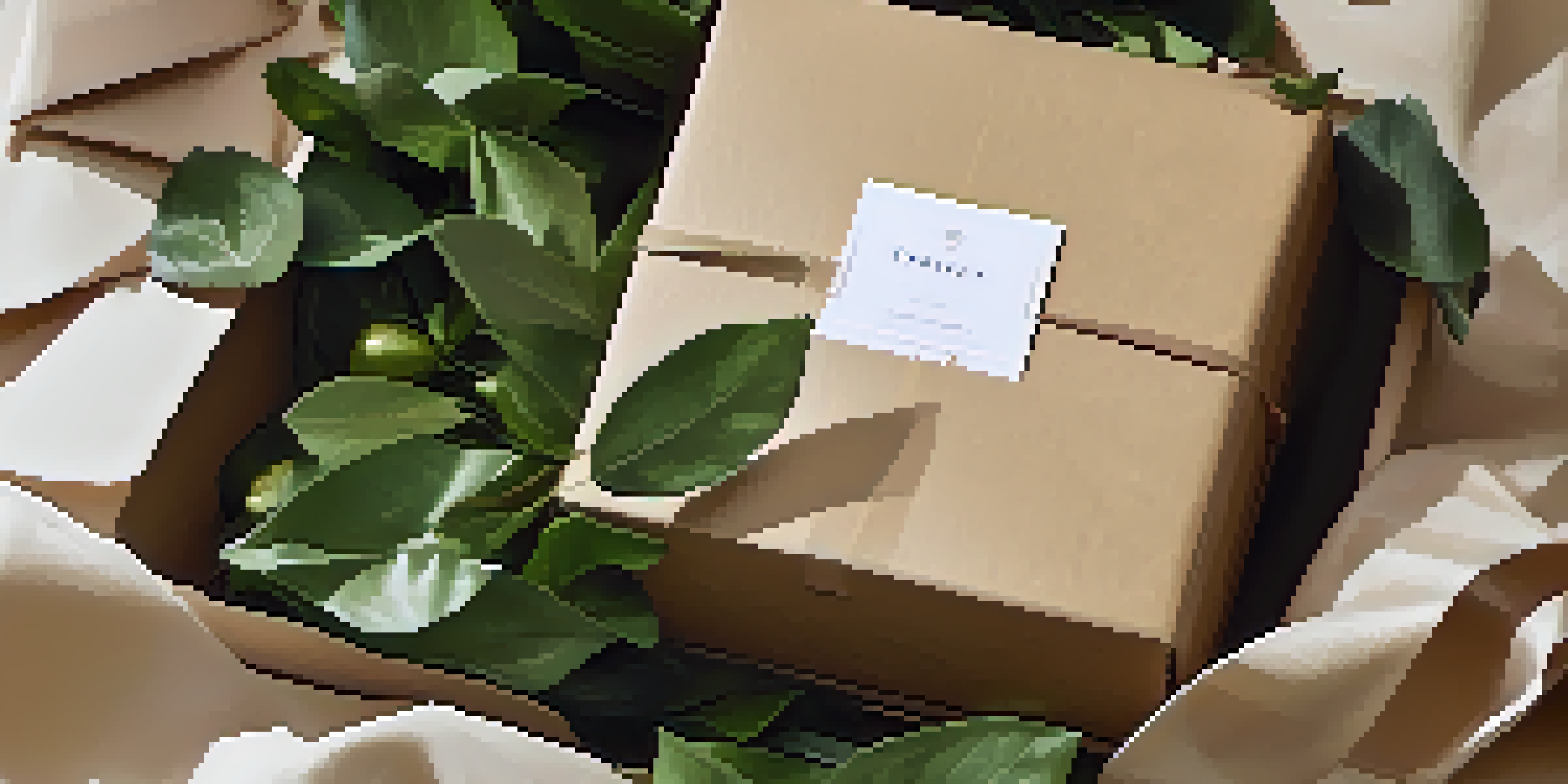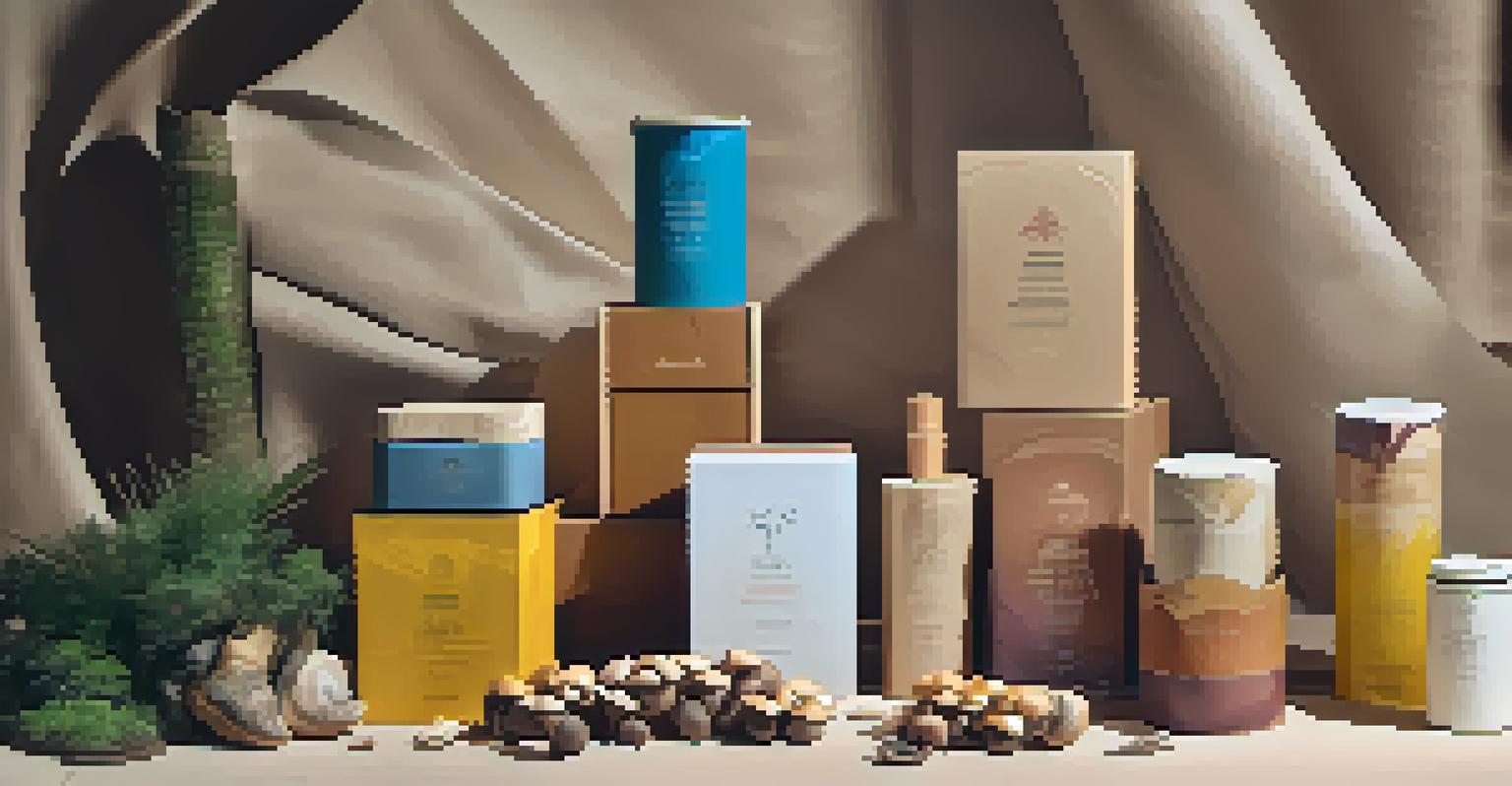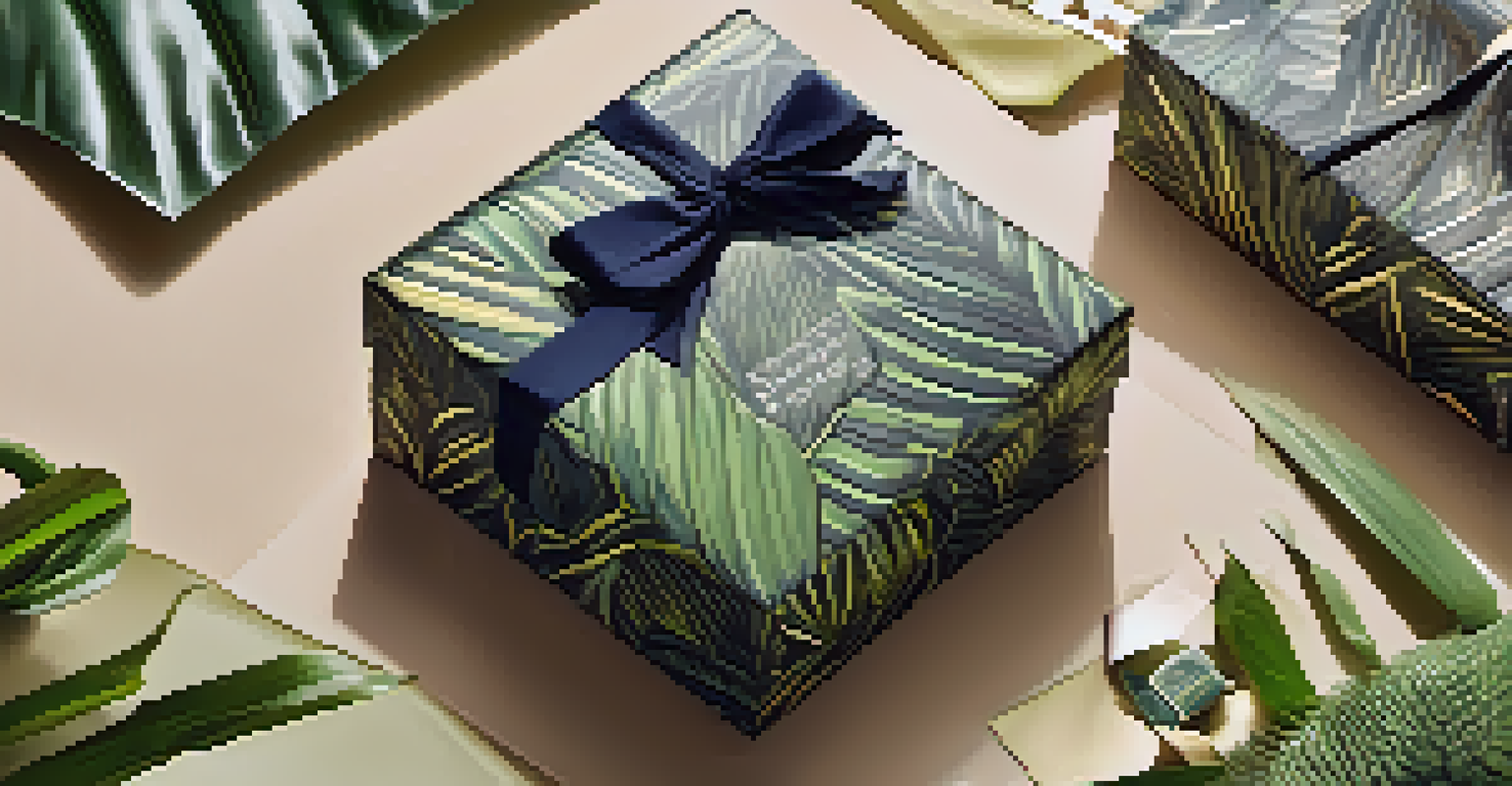Sustainable Packaging Solutions in Luxury Fashion

The Importance of Sustainable Packaging in Luxury Fashion
Sustainable packaging is no longer just a trend; it's becoming a necessity in the luxury fashion sector. As consumers grow more environmentally conscious, brands are realizing that their packaging choices can significantly impact their reputation. Luxury brands that adopt sustainable practices not only appeal to eco-minded shoppers but also contribute positively to the planet.
Sustainability is no longer a buzzword; it’s a business imperative.
Incorporating sustainable packaging means using materials that are recyclable, biodegradable, or reusable. For instance, luxury fashion houses are shifting from traditional plastic to materials like recycled paper and organic cotton. This transition not only reduces waste but also aligns with the values of a growing demographic that prioritizes sustainability in their purchasing decisions.
Moreover, sustainable packaging can enhance the overall customer experience. Imagine unboxing a beautifully wrapped item that not only looks good but also feels good to hold because it’s made from eco-friendly materials. This thoughtful approach can elevate a brand's image and foster loyalty among consumers who appreciate conscious choices.
Innovative Materials Transforming Luxury Packaging
Luxury fashion brands are getting creative with materials that enhance sustainability without compromising elegance. For example, brands are now using mushroom-based packaging, which is biodegradable and adds a unique touch to the luxury experience. This innovative approach not only reduces plastic waste but also tells a story of sustainability that resonates with consumers.

Another exciting development is the use of plant-based inks and adhesives. These environmentally friendly options allow brands to maintain their signature aesthetics while minimizing their ecological footprint. Additionally, materials like recycled plastics and ocean-bound plastics are being integrated into packaging designs, showcasing a commitment to cleaning up our oceans.
Sustainability Drives Luxury Packaging
Luxury brands are increasingly adopting sustainable packaging to align with consumer values and enhance their reputation.
By embracing these innovative materials, luxury brands can differentiate themselves in a crowded market. Consumers are increasingly drawn to brands that take bold steps toward sustainability, making it a competitive advantage that can lead to increased sales and customer loyalty.
The Role of Consumer Demand in Sustainable Packaging
Consumer demand is a powerful force driving the shift toward sustainable packaging in luxury fashion. Shoppers are increasingly seeking brands that align with their values, pushing companies to rethink their packaging strategies. This shift is not just about meeting expectations; it’s about setting new industry standards that prioritize environmental responsibility.
The greatest threat to our planet is the belief that someone else will save it.
Many luxury brands are now soliciting feedback from their customers regarding packaging preferences. By actively engaging with consumers, brands can create packaging solutions that not only look beautiful but also meet sustainability goals. This two-way communication fosters a sense of community and loyalty among brand advocates who feel their opinions matter.
As a result, the luxury fashion industry is witnessing a growing trend where sustainability is becoming a key differentiator. Brands that prioritize eco-friendly packaging are not only appealing to a niche market but are also paving the way for a broader cultural shift toward responsible consumption.
Case Studies: Luxury Brands Leading the Way
Several luxury brands are setting exemplary standards in sustainable packaging, showcasing what can be achieved when creativity meets responsibility. One notable example is Stella McCartney, a pioneer in eco-friendly fashion, who has embraced sustainable packaging by using compostable materials and minimizing waste. Their commitment to the environment is not just a marketing strategy; it's woven into the very fabric of their brand ethos.
Another inspiring case is Gucci, which has introduced innovative packaging designs made from recycled materials. Their 'Gucci Off The Grid' collection features packaging that focuses on sustainability, demonstrating that luxury can coexist with environmental consciousness. These initiatives not only enhance the brand's reputation but also inspire others in the industry to follow suit.
Innovative Materials Boost Appeal
The use of creative materials like mushroom-based packaging and plant-based inks showcases luxury brands' commitment to sustainability without sacrificing elegance.
These case studies highlight that sustainable packaging is not merely a trend; it’s an evolving practice that can redefine luxury. By investing in sustainable solutions, these brands are not only elevating their image but also encouraging other luxury fashion labels to embrace a more environmentally friendly approach.
Challenges in Implementing Sustainable Packaging
While the benefits of sustainable packaging are clear, implementing these solutions is not without challenges. One significant obstacle is the perception that sustainable materials may compromise the luxury experience. Many brands worry that eco-friendly options might not meet the high standards of quality and aesthetics that their customers expect.
Additionally, sourcing sustainable materials can be more complex and costly. Brands must navigate supply chains that prioritize eco-friendliness while ensuring that their packaging remains functional and appealing. This balancing act often requires investment in research and development, which can be a barrier for smaller luxury brands.
Despite these challenges, many luxury fashion brands are finding ways to overcome them. By collaborating with sustainable material suppliers and investing in innovative designs, they are proving that luxury and sustainability can indeed go hand in hand.
The Future of Sustainable Packaging in Luxury Fashion
Looking ahead, the future of sustainable packaging in luxury fashion appears promising. As consumer expectations continue to evolve, brands will need to innovate and adapt to stay relevant. This shift will likely lead to more advancements in materials and designs that prioritize both luxury and sustainability.
We can anticipate a rise in circular packaging solutions, where materials are reused and recycled continuously. This approach not only minimizes waste but also allows brands to create a closed-loop system that supports sustainability. Brands that invest in these practices will likely capture the attention of a discerning consumer base that values responsible choices.
Consumer Feedback Shapes Practices
Engaging consumers in packaging decisions helps luxury brands meet sustainability goals and fosters a loyal community centered around responsible consumption.
Ultimately, the future of luxury fashion will depend on the industry's ability to embrace sustainability as a core principle. By prioritizing eco-friendly packaging, brands can foster a new generation of consumers who are not only loyal but also passionate advocates for a more sustainable future.
How Consumers Can Support Sustainable Packaging Efforts
Consumers play a crucial role in supporting sustainable packaging initiatives in the luxury fashion industry. By choosing to purchase from brands that prioritize eco-friendly packaging, shoppers can send a strong message about the importance of sustainability. Each purchase becomes a vote for a greener future, encouraging more brands to adopt responsible practices.
Additionally, consumers can engage with brands on social media, sharing their preferences for sustainable packaging. By voicing their support and highlighting brands that excel in this area, consumers can help amplify the conversation around sustainability. This grassroots approach can create a ripple effect, influencing others to consider the environmental impact of their fashion choices.

Finally, recycling and reusing packaging whenever possible is a simple yet effective way for consumers to contribute. By taking personal responsibility for how they dispose of or repurpose packaging, individuals can help reduce waste and promote a culture of sustainability that extends beyond the purchase itself.